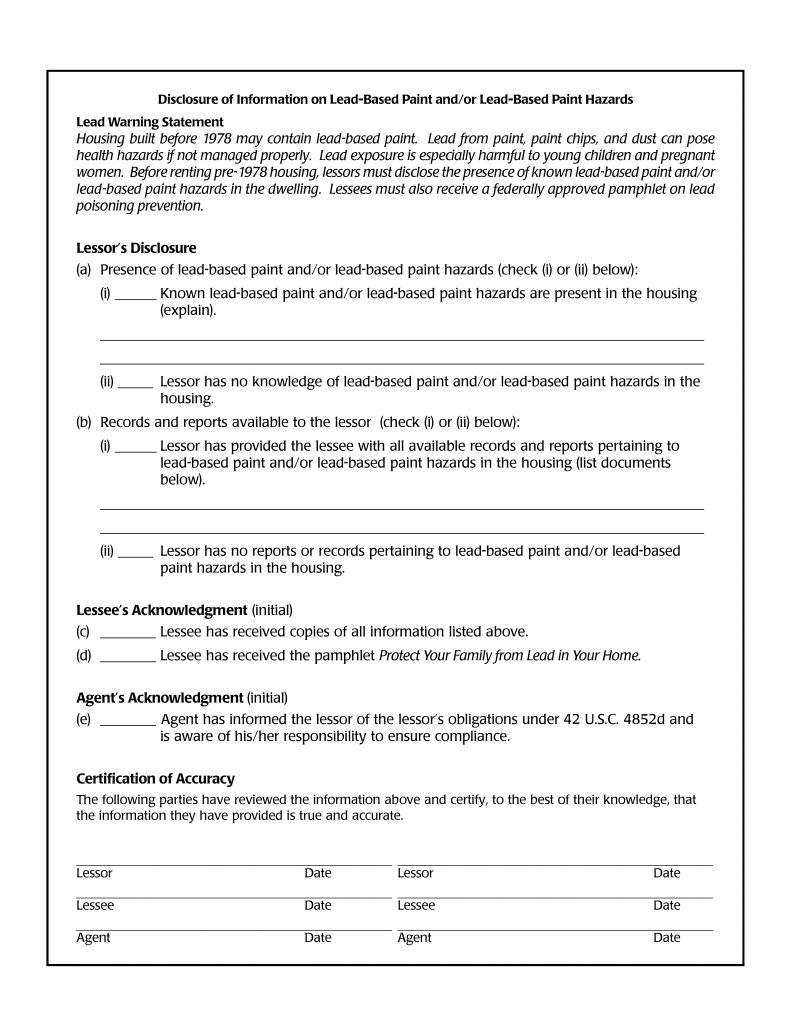Lead-based paint hazards
Lead based paint was used as a pigment and drying agent in alkyd oil-based paint. Although lead-based paint may be found on any interior or exterior surface, it is particularly common on doors, window frames, and other woodwork. The federal government estimates that lead is present in about 75% of all the private housing built before 1978 or in as many as 57 million homes, ranging from low-income apartments to million-dollar mansions.
Lead from paint or other sources can result in damage to the brain, nervous system, kidneys, and blood. Children younger than six are particularly vulnerable.
Children younger than six are the most vulnerable to damage from excessive lead levels. Elevated levels of lead in children cause learning disabilities, developmental delays, reduced height, and poor hearing; the effects are generally irreversible. Excessive exposure in adults can induce anemia and hypertension, trigger gallbladder problems, and cause reproductive problems in both men and women.
Lead dust can be ingested from the hands by a crawling infant, inhaled by any occupant of a structure, or ingested from the water supply because of lead pipes or lead solder. Soil and groundwater may be contaminated by everything from lead plumbing in leaking landfills to discarded skeet and bullets from an old shooting range. High levels of lead have been found in the soil near waste-to-energy incinerators.
In 1996, the EPA and the Department of Housing and Urban Development (HUD) issued final regulations, under statutory authority provided by the Lead-Based Paint Hazard Reduction Act (LBPHRA) of 1992, requiring disclosure of the presence of any known lead-based paint hazards to potential buyers or renters. The federal law does not require that anyone test for the presence of lead-based paint.
LBPHRA requires the following from sellers and landlords of residential dwellings built before 1978:
- Landlords must disclose known information on lead-based paint and hazards before leases take effect. Leases must include a disclosure form regarding lead-based paint.
- Sellers have to disclose known information on lead-based paint and hazards prior to an execution of a contract for sale. Sales contracts must include a completed disclosure form about lead-based paint This is the form for sellers and is slightly different from the form for landlords. Licensees should use EPA-written disclosure forms rather than creating their own forms.
- Buyers have up to 10 days to conduct a risk assessment or an inspection for the presence of lead-based paint hazards.
- Licensees provide buyers and lessees with Protect Your Family from Lead in Your Home, the pamphlet created by the EPA, HUD, and the U.S. Consumer Product Safety Commission.
- Renovators must give homeowners the Protect Your Family from Lead in Your Home pamphlet before starting any renovation work.
- Anyone who is paid to perform work that disturbs paint in housing and child-occupied facilities must be trained and certified in the EPA’s new lead-based work practices. This includes residential rental property owners/managers, general contractors, and special trade contractors (e.g., painters, plumbers, carpenters, electricians). The Renovation, Repair, and Painting (RR&P) program involves renovation education. This education includes distribution of the Renovate Right pamphlet to the property owners before work commences.
- Licensees must ensure that all parties comply with the law.
- Sellers, lessors, and renovators are required to disclose any prior test results or any knowledge of lead-based paint hazards. With only a very narrow exception, all real estate licensees (subagent, buyer’s agent, and facilitator) are required to advise sellers to make the required disclosures. Only buyer’s agents who are paid entirely by the buyer are exempt.
- Paint inspection. A paint inspection will provide the lead content of every different type of painted surface in a home. This inspection will not indicate whether the paint is a hazard or how the homeowner should deal with it.
- Risk assessment. A risk assessment notes the presence of any sources of serious lead exposure, such as peeling paint or lead dust. It also describes what actions can be taken to address the hazards.




